Zeinab Masri | Jana al-Issa | Hussam al-Mahmoud
To the tune of a song glorifying Syria, members of the Syrian regime forces in military uniforms filmed themselves riding in a private car while escorting another truck carrying corpses to a mass grave, where the bodies were cremated.
The two vehicles, which carried Daraa governorate license plates, stopped at a checkpoint with a sign that read,” Stop-Police.” That sign was seemingly placed for those intending to meet with some heavily armed men affiliated with the Syrian regime forces.
The camera lens wandered over the faces of those members riding in the car, clearly capturing their facial features. Then, the camera showed dozens of detainees’ corpses piled in the open-back truck, surrounded by a large group of Syrian regime soldiers. In a few minutes, the dead bodies were emptied into a small pit and covered with tree branches. After that, they were set on fire en masse in a festive atmosphere.
This video footage was published by Zaman al-Wasl, an opposition news outlet, on 12 August. It said that the footage was taken in a secluded semi-desert in the northern countryside of Daraa. It included the burning of dead bodies of detainees between 2011 and 2013 at the hands of the Military Intelligence and Air Force Intelligence, with the cooperation of Syrian government soldiers.
The video refocused public attention on the issue of detainees and the treatment of their dead bodies.
In the face of these serious international law violations, several human rights organizations, civil society activists and international actors, including the US, Canada, and the Kingdom of the Netherlands, make efforts to hold the Syrian regime accountable for the crimes committed against the Syrian people, many of which rise to the level of “war crimes” and crimes against humanity.
In this in-depth article, Enab Baladi talks about why the Syrian regime has resorted to burning the corpses of war victims, including civilians, in the context of the Syrian war and detainees in its prisons. It also discusses with legal experts the possible accountability mechanisms to punish those involved.
Covering up evidence or taking revenge
Many reasons why the Syrian regime chose to have its detainees cremated
The video, circulated by local media outlets, highlights the Syrian regime’s gross crimes against humanity; the Syrian regime burns its opponents while they are alive. Also, the regime burns the dead bodies of many of its detainees and forcibly disappeared persons. Many such cases have been documented by human rights organizations.
The victims’ bodies were burned in the vicinity of al-Masmiya district, northwest of Daraa, a semi-desert area in which the administrative borders of Daraa, Damascus and As-Suwayda governorates overlap, as reported by Zaman al-Wasl.
Zaman al-Wasl documented the involvement of a major from one of the villages of Jableh in Latakia governorate who is affiliated with the Military Security Agency, and an assistant from one of the Salamiyah villages in Hama governorate. The news outlet noted that it has reservations about mentioning their explicit names in the service of any judicial investigation into this file.
Fadel Abdul Ghany, the founder and chairman of the Syrian Network for Human Rights (SNHR), told Enab Baladi that the information about the video is insufficient. The dead bodies could belong to people who were arrested at a militia checkpoint for a few hours, then were killed. After that, their bodies were burned as a kind of “schadenfreude, and boasting.”
Based on data obtained from similar incidents between 2012 and 2013, there were checkpoints run by local sectarian militias, 85 percent of which were from the Alawite sect.
The Syrian regime’s security services torture and starve detainees inside their detention facilities and prisons, in addition to other “savage” practices. However, they do not burn bodies despite the fact that they are sectarian and communal agencies, Abdul Ghany believes.
He pointed out that there is insufficient evidence that proves that the Syrian regime burns dead bodies of detainees instead of burying them. Although this might be true, there is no evidence, information, or photos from witnesses or people who defected from the regime to prove these brutal practices for sure.
Abdul Ghany indicated that the dead bodies appeared in the video shows no clear signs of torture or abuse, excluding the possibility that these bodies belong to detainees. However, there were bullet holes in the forehead and chest. This means that the bodies appearing in the video belong to people who were first killed, and then their bodies were burned.
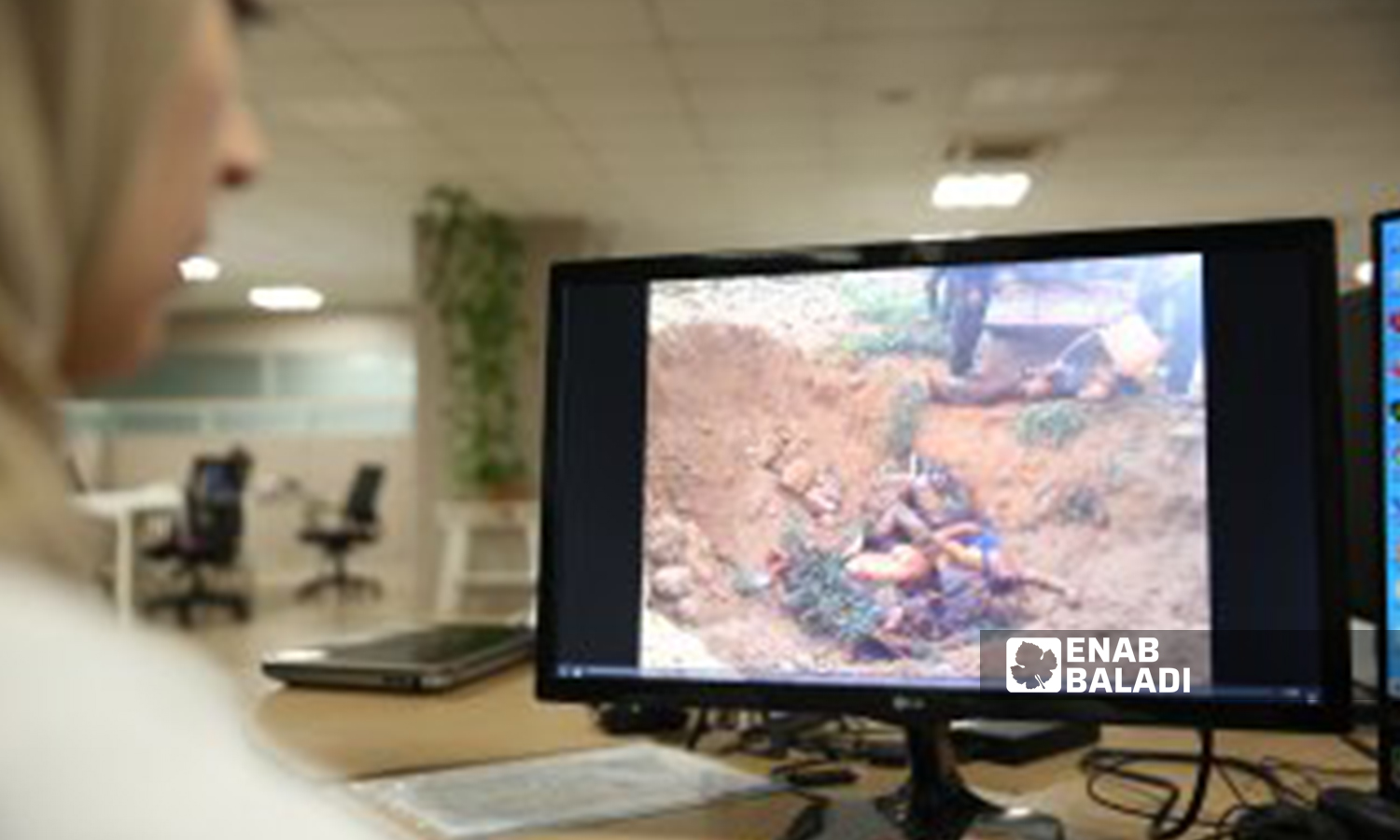
A scene of members of the Syrian regime forces burning bodies of Syrian detainees in Daraa countryside- 27 August 2021 (Enab Baladi-Omran Okasha)
Same motives for previous accidents
Syrian regime forces, pro-regime forces and foreign militias have used the policy of extermination and abuse against Syrian people intensively since the eruption of popular protest in March 2011.
The forces have adopted the practice of execution by burning and the burning of bodies of murdered persons throughout 2012 widely. These barbaric practices have endured over the following years, according to a report by the Syrian Network for Human Rights (SNHR) issued in February.
According to the report, figures illustrate that burning people to death or burning the corpses of people killed by the regime forces is a systematic policy adopted by the regime forces in different Syrian cities. Over the past four years, such acts have occurred during several sectarian massacres, mostly in Hama.
“Government forces have carried out wide operations in which bodies of executed or slaughtered victims were burned, apparently to take revenge, deter and terrorize local communities, or to deform and disfigure bodies and thus cover up the crimes. There were also cases of women being burned after being sexually assaulted,” according to the report.
“The burning of bodies was carried out either to individual and separate cases, or collectively to a number of people as punishment for retaliation, with sectarian justifications.”
Most of the cases were carried out in sectarian massacres committed by local or foreign militias in coordination and cooperation with government forces.
Systematic policy against opponents
Wissam al-Oklah, a professor of International Law at the Turkish University of Mardin, does not believe that these actions are individual, but they come within a systematic policy followed by the Syrian regime since the start of the popular uprising in Syria under the slogan “Al-Assad or we burn the country.”
Such vicious acts are considered part of the Syrian regime’s battle against its own dissidents, al-Oklah told Enab Baladi. The Syrian regime aims to spread terror and intimidate the other party by adopting a policy devoid of any legal, moral, social, religious or even civil scruples. The Syrian regime’s barbarous acts contradict international laws and norms, even social and religious ones that say, “the dead should still be honored through burial,” even if the dead body belongs to an enemy.
Al-Oklah added that the burning of the bodies was a “barbaric” act that reflects the state of helplessness, defeat and instinctive violence that the regime forces endure against everyone who supports the revolution.
Al-Oklah believes that the regime forces’ burning of the victims’ bodies is an attempt to obliterate any evidence of the crimes they committed against Syrian citizens, especially since most of the bodies belong to the forcibly disappeared whose families do not know any information about their places of detention or the party that arrested them.

Four men in camouflage gear exchanging jokes in unaccented Russian as they pour flammable liquid over a man’s mutilated corpse strung up on two wooden beams- Syria 2017.
Can a corpse be identified after cremation?
The Syrian regime has always hidden the bodies of detainees in its prisons and detention facilities from their families. Most Syrian families do not receive the dead bodies of their loved ones. Other families know about the death of their relatives by chance or notification from the Civil Status departments.
The Syrian regime issues death certificates for detainees in its prisons, which say the leading causes of detainees’ death is either because their breathing or heart stopped or because they had a stroke. The detainees’ death certificates provide no further details that may put their family or friends in the picture of what their deceased experienced before their death.
This has been confirmed by many families who received death certificates with the aforementioned reasons written as the cause of death.
However, after a military code-named Caesar smuggled thousands of photos of detainees who were tortured to death in Bashar al-Assad’s jails, out of Syria, many families were able to take a look at the photos, where they saw signs of torture and abuse on the dead bodies of their loved ones. These signs explain what they had been through before they died.
Sworn forensics expert in the Forensic Medicine Department in the city of Azaz in Aleppo countryside, Dr.Muhammad Kahil confirmed that most cases of death resulting from torture in the regime’s prisons, or premeditated murder, was recorded in Syria because of “heart and breathing stops.” He noted that the Syrian regime used this mechanism of registering deaths because it “tries as much as it can to conceal its crimes.”
When the body is completely cremated, all wound scars and other consequences of violent abuse—such as beatings, burning, water, abuse, stab wounds, sexual violence and gunshots—are gone because muscles, veins, blood vessels and viscera fade away, Kahil explained.
In his interview with Enab Baladi, Kahil added that consuming a body in fire, especially by using easily flammable materials, leads to a significant change in the shape of the body’s structure within a short time that may not exceed one hour.
The forensics expert said that the fire victim identification could be made based on the severity of damage to the skin. There are different degrees of burns. With mildest-degree, it is possible to identify the body with “difficulty” through several indications that are still present in the body, including the hard tissues like teeth.
However, in cases of deliberate and intentional burning of a dead body with intent to cover up such a horrible crime,” identifying the body is almost impossible,” except if there are high-tech and accurate laboratories to examine the body’s DNA. This can be done if the body is not turned into ashes,” the expert clarified.
Article 130 of the Geneva Convention, which was approved in 1949 with the aim of protecting civilians in times of war, states that the effective authorities must ensure that detainees who die during detention are buried with respect and, if possible, according to the rites of the religion to which they belonged. Their graves are to be respected, adequately maintained, and marked so that they can always be always found.
The Geneva Convention also stipulates that deceased prisoners of war must be buried in individual graves unless compelling circumstances require the use of mass graves. And it is not permissible to mutilate the corpses and their remains.
“Bodies shall not be cremated except for imperative reasons of hygiene or for motives based on the religion of the deceased. In case of cremation, the circumstances and reasons for cremation shall be stated in detail in the death certificate or on the authenticated list of the dead,” according to the convention.
Suspended accountability
Issues of burning bodies must be brought up by international organizations at the trail
Photos of the bodies of detainees who died under torture in the regime’s prisons—which were leaked by the defected military photographer nicknamed “Caesar”— were shared as evidence in the trials taking place in Germany for officers who were in the ranks of the regime.
Syrians benefit from countries invoking universal jurisdiction, such as Germany and Sweden. Universal jurisdiction provides the means to pursue and prosecute the perpetrators of crimes against humanity wherever they are and wherever they commit their crimes.
However, in countries that do not have this judicial system, the jurisdiction for prosecution is much narrower.
In its detailed report, Zaman al-Wasl explained that it places the shocking video—which shows the cremation of the detainees’ dead bodies by the Assad forces in southern Syria—” as an official report” in the hands of the active forces in the world to open the door for the prosecution of those involved and as proof to holding them accountable, just like the photos of Caesar, which were used as evidence in the trials of regime officers in Europe.
Reduced penalty for burning dead bodies in Syria
Article 468 of the Syrian Penal Code criminalizes the violation or desecration of graves. The same article also stipulates a penalty of imprisonment for two months to two years, together with a fine for those who bury or cremate an individual without due process or contrary to the laws and regulations related to burial or cremation. If the burial or cremation is committed with the intention of concealing death or birth, the perpetrator shall be imprisoned between two months and two years.
An informed human rights lawyer residing in Damascus told Enab Baladi that the punishment according to Syrian law is reduced for such an act, despite it being a war crime, because the execution of these people took place outside the framework of the law.
The human rights lawyer, who spoke on the condition of anonymity for security reasons, said that it is not possible to hold perpetrators of such crimes accountable in Syria. Therefore, Syrian people rely on international accountability, as is the case in many European countries. Therefore, the photos of those involved in burning dead bodies of detainees must be published and their names must be documented in order to be identified later, because defaming and exposing the killers “embarrass them a lot.”
Fadel Abdul Ghany, the founder and chairman of the SNHR, believes that most of the domestic laws do not weigh because the regime is the “biggest” violator of these laws.
“The domestic law is represented by the Syrian regime,” so that the Syrian regime soldiers who appeared in the video will not be held accountable.”
The Syrian regime has not held even a single officer accountable since the start of the revolution ten years ago. In fact, laws protect its security forces and legalize crime, according to Abdul Ghany.
In international law, it is a war crime
As for international laws, Abdul Ghany said that these practices are a violation of human dignity and include various types of violations prohibited under international law, including torture and abuse of corpses.
Also, extrajudicial killing is a crime. It has become widespread and systematic at the hands of the Syrian regime. The barbaric actions of those who are burning Syrians alive or dead are regarded as crimes against humanity, Abdul Ghany said.
Abdul Ghany continued that the Syrian regime kills certain people and burns their bodies because it suspects they are supporters of the Syrian opposition or during an armed conflict. These practices, including deliberate killing, mutilation, or other maltreatment of dead bodies (including burning dead bodies), also constitute a war crime.
He said that the SNHR always works actively to advances issues such as arrests, enforced disappearance and torture, which are central to their efforts. The SNHR focuses on them in its strategies that appear in the form of monthly or periodic reports and advocacy processes when meeting with any officials or so on.
Professor Wissam al-Oklah indicated that international humanitarian law criminalizes terrorist acts of torture, mutilation and burning of corpses. Many international conventions consider these acts as serious crimes that amount to war crimes and crimes against humanity.
Below are some of those conventions: the Rome Statute of the International Criminal Court, the four Geneva Conventions of 1949, and their Additional Protocol of 1977, in addition to the norms and principles of the international human rights law.
These conventions include international standards and norms related to the prevention of torture and premeditated killing, the importance of treating the dead bodies in a respectful manner. According to international standards, burial should be in individual graves. Collective graves can only be used when circumstances do not allow the use of individual graves.
Besides, the bodies shall not be cremated except for imperative reasons of hygiene or for motives based on the religion of the deceased.
Al-Oklah believes that legal accountability is currently suspended, but this does not prevent the documentation of these crimes and the evidence surrounding them for later use before international courts or special courts established for this purpose.
Therefore, the organizations concerned with collecting and processing evidence related to war crimes and crimes against humanity must maintain and analyze the videos that document these crimes. In addition to that, these organizations should work to identify the people who appeared in the videos and photos published about war crimes to include their names in the lists of people whose hands are stained with the blood of innocent Syrians.
They should also file cases against perpetrators of war crimes and crimes against humanity if any of them leaves Syria, based on the principle of universal jurisdiction. The organizations must ensure that perpetrators of crimes abhorrent to humanity should not escape justice or enjoy impunity. This is because of no exceptional circumstances whatsoever, whether a state of war or a threat of war, may be invoked as a justification for their actions. These crimes, in fact, do not have a statute of limitations.
Any person, including high-ranking leaders, who helps or assists the main perpetrators or the perpetrators of the act directly in preparing, facilitating, or carrying it out, must be held accountable.
The Syrian regime has an extensive criminal record: It is not its first time
The video recently published by Zaman al-Wasl of Syrian regime forces setting fire to the bodies, believed to belong to detainees, in mass graves in the southern governorate of Daraa— is not the only source or evidence that demonstrates the Syrian regime’s deliberate ill-treatment and torture of detainees in its facilities, including their dead bodies.
Official agencies and human rights groups documented many similar burning incidents that did not receive the same media coverage because they took place during the military escalation waged by the regime against various Syrian cities and regions.
In May 2017, the US State Department confirmed that the Syrian regime was systematically incinerating the corpses of executed inmates at the Sednaya prison complex to destroy evidence that could be used to prosecute war crimes.
The ministry said that up to 50 detainees were hanged daily and that some bodies were being disposed of in crematoriums.
“We now believe that the Syrian regime has installed a crematorium in the Sednaya prison complex, which could dispose of detainees’ remains with little evidence,” Stuart E. Jones, the acting assistant secretary of state for Near Eastern affairs.
The US State Department published satellite photographs of the prison taken between 2013 and 2017. It said that the Syrian regime modified a building within the Saydnaya Prison complex, believed to be a crematorium. These photographs do not provide conclusive evidence that the regime used a crematorium to dispose of the bodies. At the same time, the evidence is “credible.”
The US State Department published satellite photographs of the prison taken between 2013 and 2017. It said that the Syrian regime modified a building within the Saydnaya Prison complex, believed to be a crematorium. These photographs do not provide conclusive evidence that the regime used a crematorium to dispose of the bodies. However, “credible sources have believed that many of the bodies have been disposed of in mass graves,” Jones said.
Jones pointed to collecting information from various humanitarian and intelligence agencies suggesting that the prison was used to cremate the bodies, as well as images of the melting of snow from the roof of the facility due to the internal heat source. “That would be consistent with a crematorium.”.
“The attempt to cover up mass murders in the Assad crematorium is reminiscent of the 20th century’s worst offenses against humanity,” the New York Times quoted Nikki R. Haley, the American ambassador to the United Nations.
On the other hand, the regime considered it a “Hollywood story,” and the Ministry of Foreign Affairs and Expatriates denied the American accusations about the establishment of a crematorium inside Sednaya Military Prison.
A report issued by the SNHR in February 2015 presented some of the main documented cases of burning bodies following collective massacres.
The first case of burning bodies, documented by the SNHR in its report, took place during the Deir Baalba massacre. The Syrian government, supported by a local militia, committed a massacre in Deir Baalba over a week from 2 to 9 April 2012, which included field executions of civilians and mutilation and burning of most of the bodies and buried them in mass graves.”
In March of 2013, the regime forces arrested two families during their withdrawal from the village of Apel in the countryside of Homs after clashes with members of the armed opposition. Then, they killed them and burned their bodies. The SNHR documented the killing of 14 people at that time whose bodies had marks of burning.
The Syrian government killed dozens of people from the village of al-Mazra’a in rural Aleppo on 21 June 2013. They threw some of the dead bodies into the village well while the others were burned, according to the SNHR.
The SNHR, in its report, also highlighted some cases of bodies being burned after field executions.
The first occurred in February when the burned body of an English language teacher in her forties was found; the teacher was kidnapped, killed and burned by regime forces.
And in May 2012, three members of the same family, including a child and a woman in Hay al-Qusor neighborhood in Homs, were shot dead by the Syrian regime forces. Locals found their bodies with burn marks a few days after their execution.
The report also documented the execution of the Mukhtar of al-Asali neighborhood in Damascus. The Syrian regime forces slaughtered him with knives and then burned his body on 26 July.
The history of the aforementioned massacres, which were confined to the first years of the revolution, between 2012 and 2013, indicates that there may have been abuse and burning of bodies in later years which were not documented, or at least did not appear to the public.
if you think the article contain wrong information or you have additional details Send Correction
النسخة العربية من المقال
-
Follow us :
Most viewed
- Printing Syrian currency in Europe... A file on the table
- Books make a comeback in Damascus libraries after being banned under Assad
- Complex steps to establish new Syrian army
- National Security Council in Syria: A necessity imposed by reality
- SDF-Damascus agreement in Aleppo: A test balloon for broader consensus












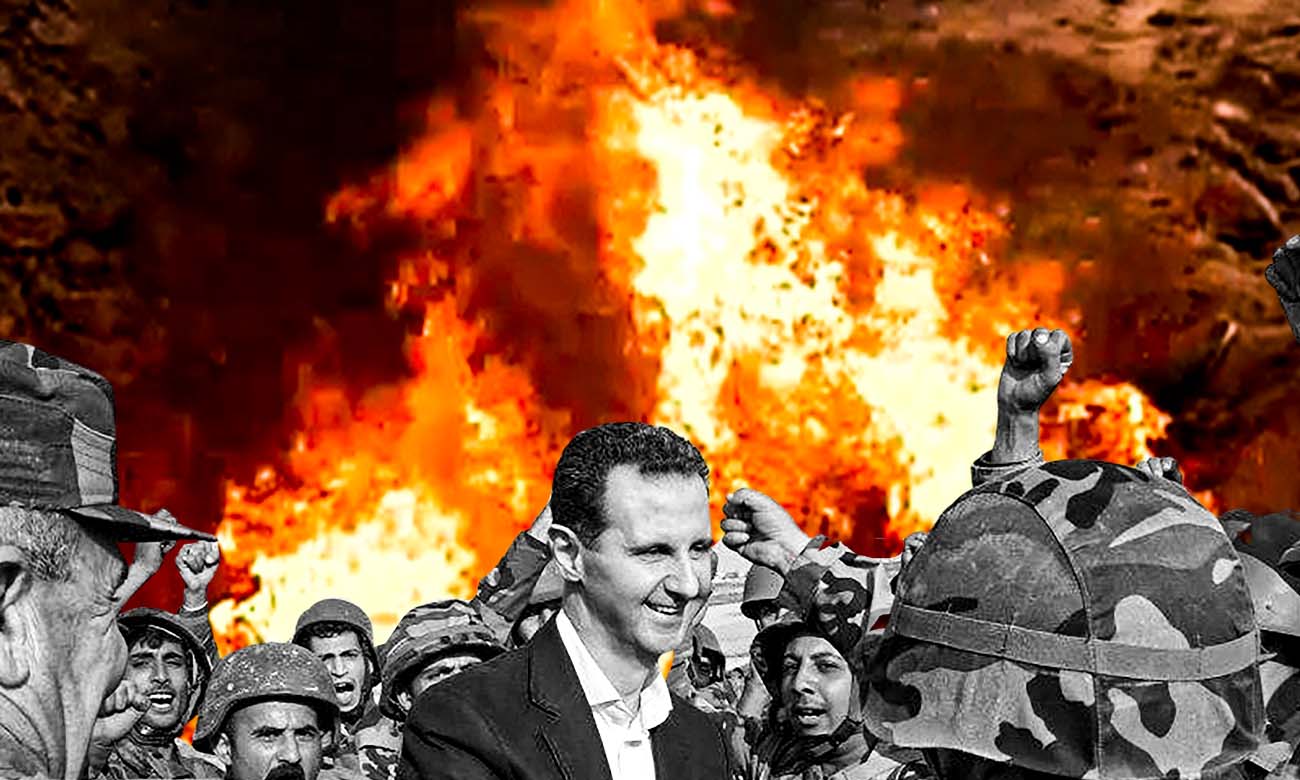






 A
A
A
A
A
A

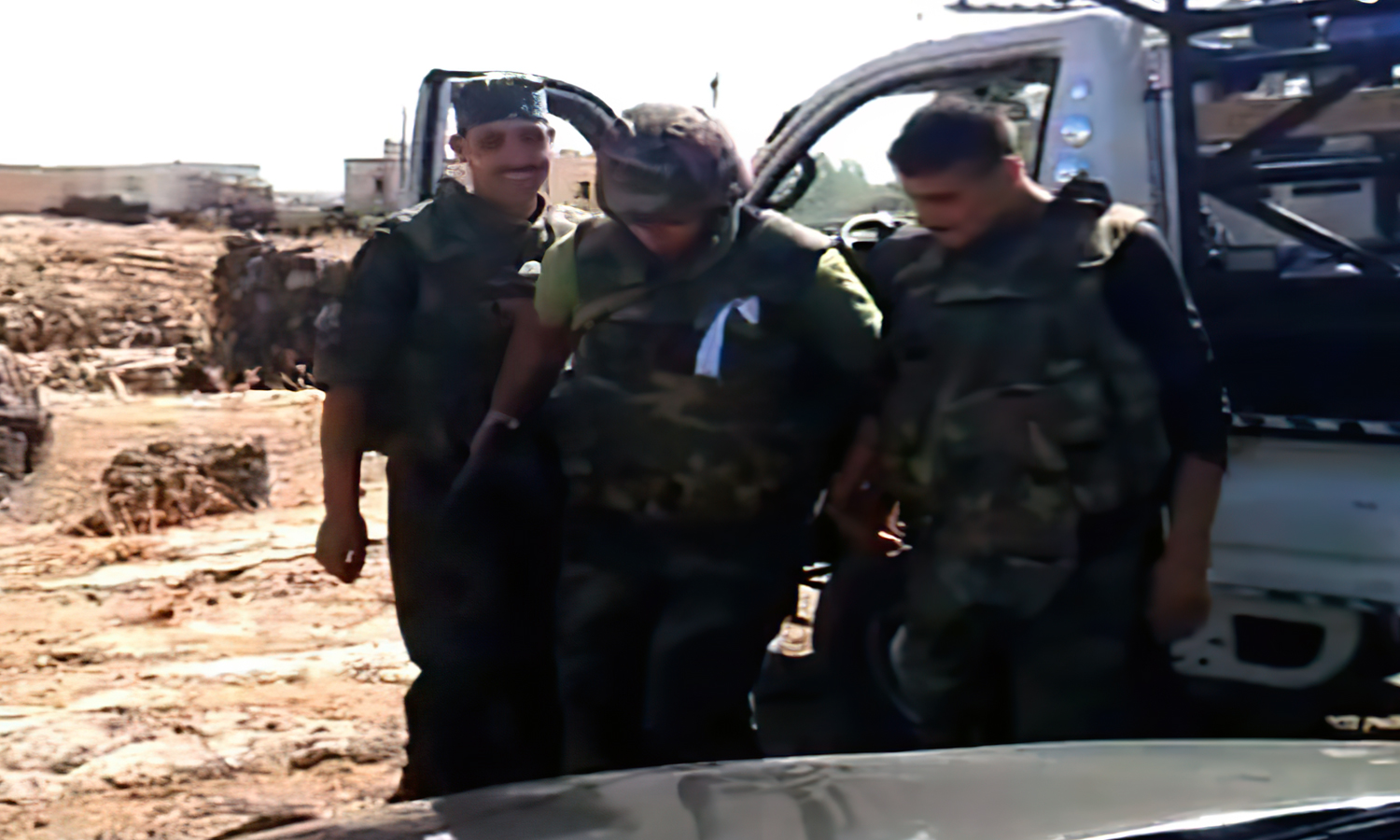
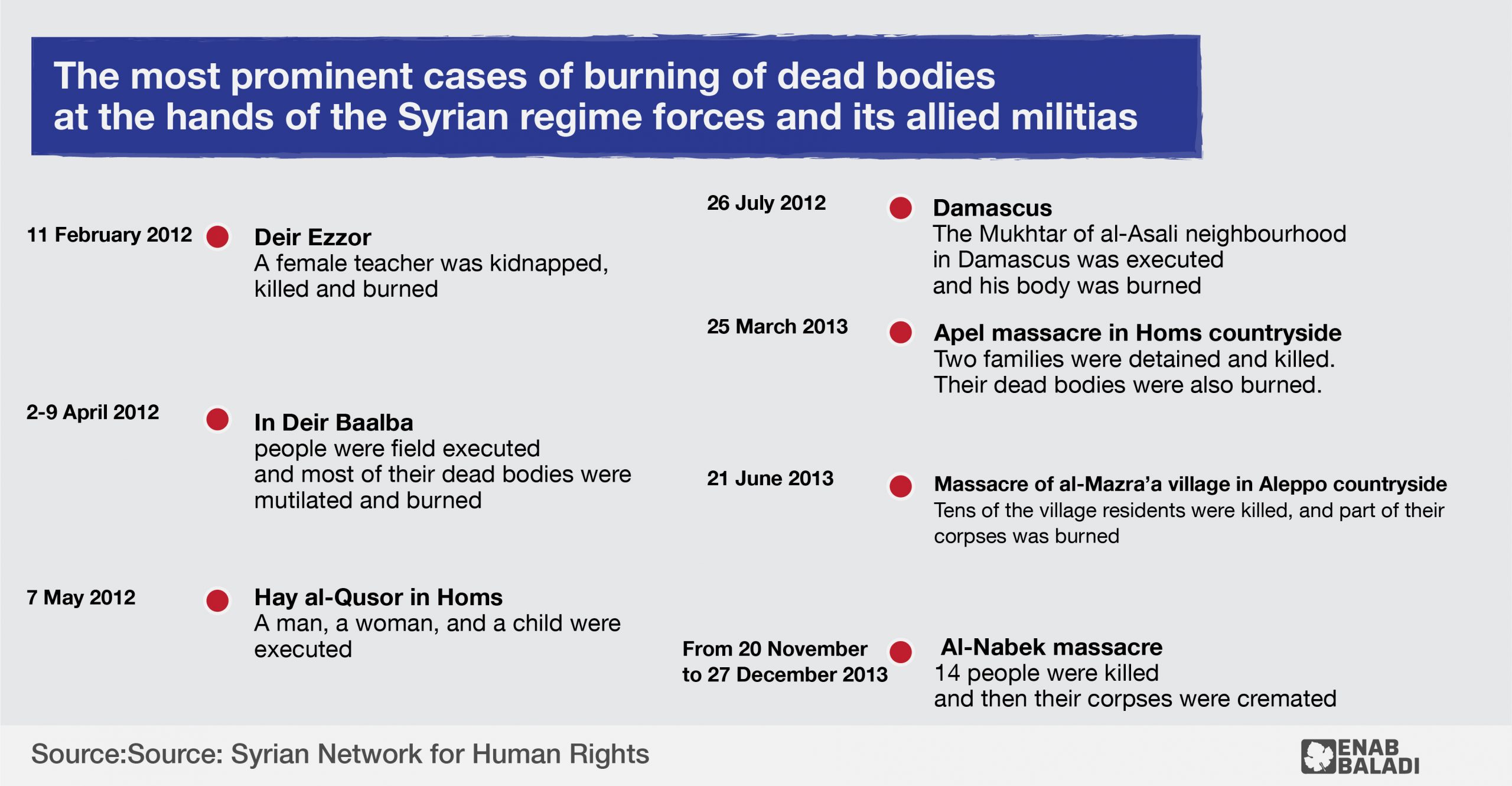
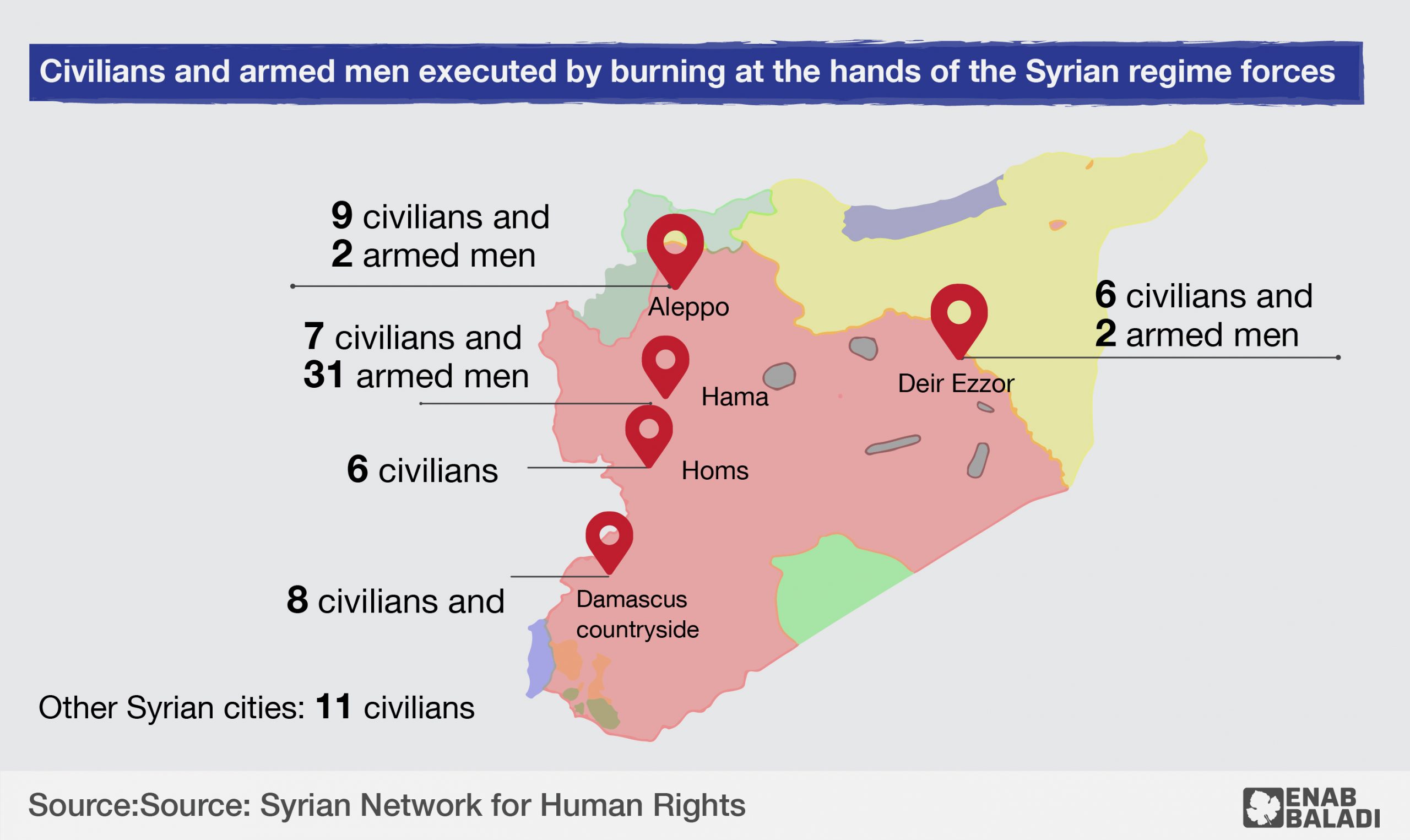





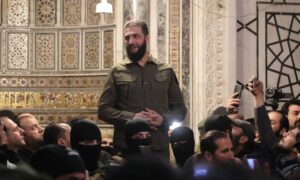
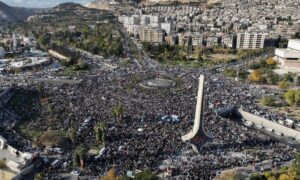
 More In-Depth
More In-Depth